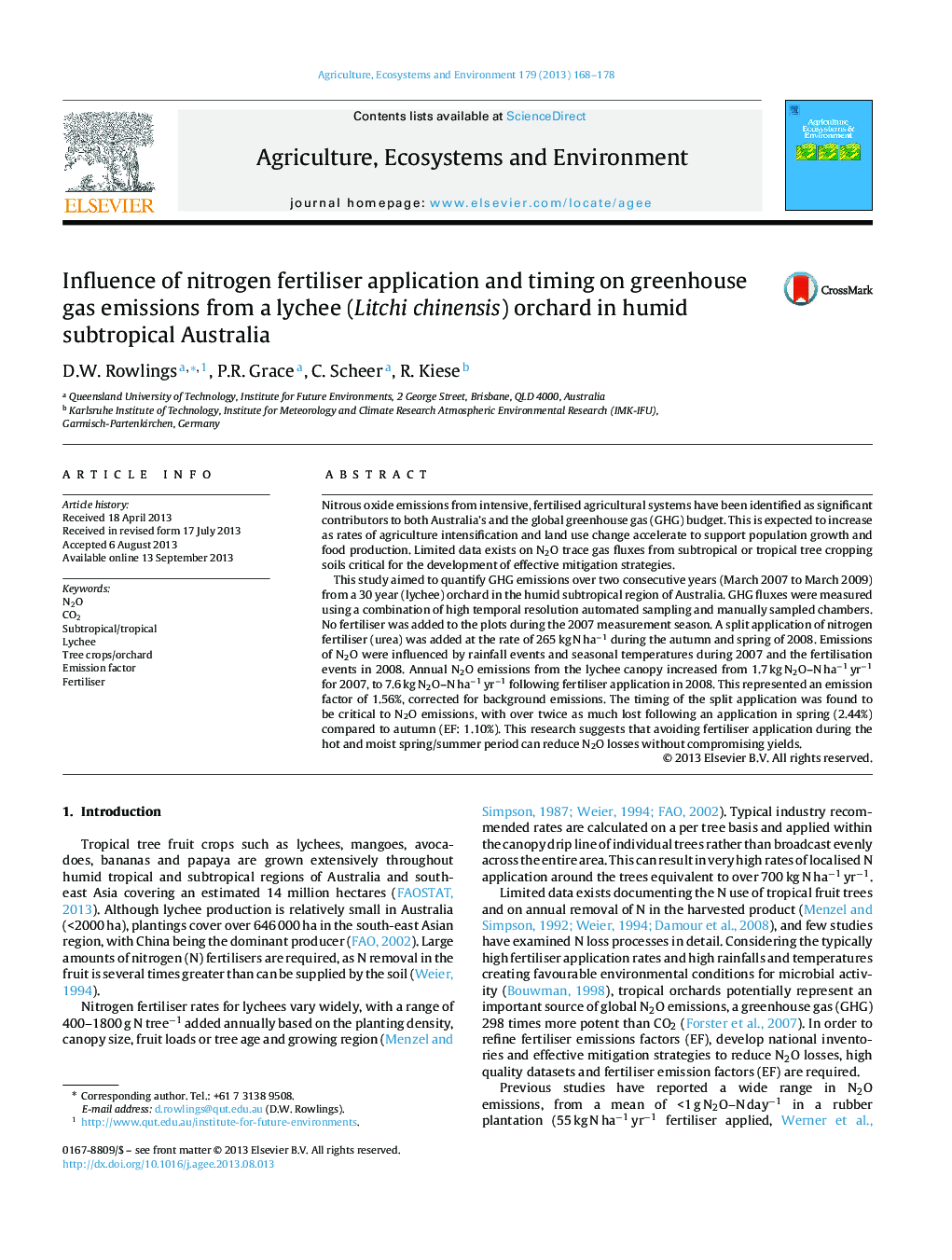| Article ID | Journal | Published Year | Pages | File Type |
|---|---|---|---|---|
| 8488086 | Agriculture, Ecosystems & Environment | 2013 | 11 Pages |
Abstract
This study aimed to quantify GHG emissions over two consecutive years (March 2007 to March 2009) from a 30 year (lychee) orchard in the humid subtropical region of Australia. GHG fluxes were measured using a combination of high temporal resolution automated sampling and manually sampled chambers. No fertiliser was added to the plots during the 2007 measurement season. A split application of nitrogen fertiliser (urea) was added at the rate of 265 kg N haâ1 during the autumn and spring of 2008. Emissions of N2O were influenced by rainfall events and seasonal temperatures during 2007 and the fertilisation events in 2008. Annual N2O emissions from the lychee canopy increased from 1.7 kg N2O-N haâ1 yrâ1 for 2007, to 7.6 kg N2O-N haâ1 yrâ1 following fertiliser application in 2008. This represented an emission factor of 1.56%, corrected for background emissions. The timing of the split application was found to be critical to N2O emissions, with over twice as much lost following an application in spring (2.44%) compared to autumn (EF: 1.10%). This research suggests that avoiding fertiliser application during the hot and moist spring/summer period can reduce N2O losses without compromising yields.
Related Topics
Life Sciences
Agricultural and Biological Sciences
Agronomy and Crop Science
Authors
D.W. Rowlings, P.R. Grace, C. Scheer, R. Kiese,
